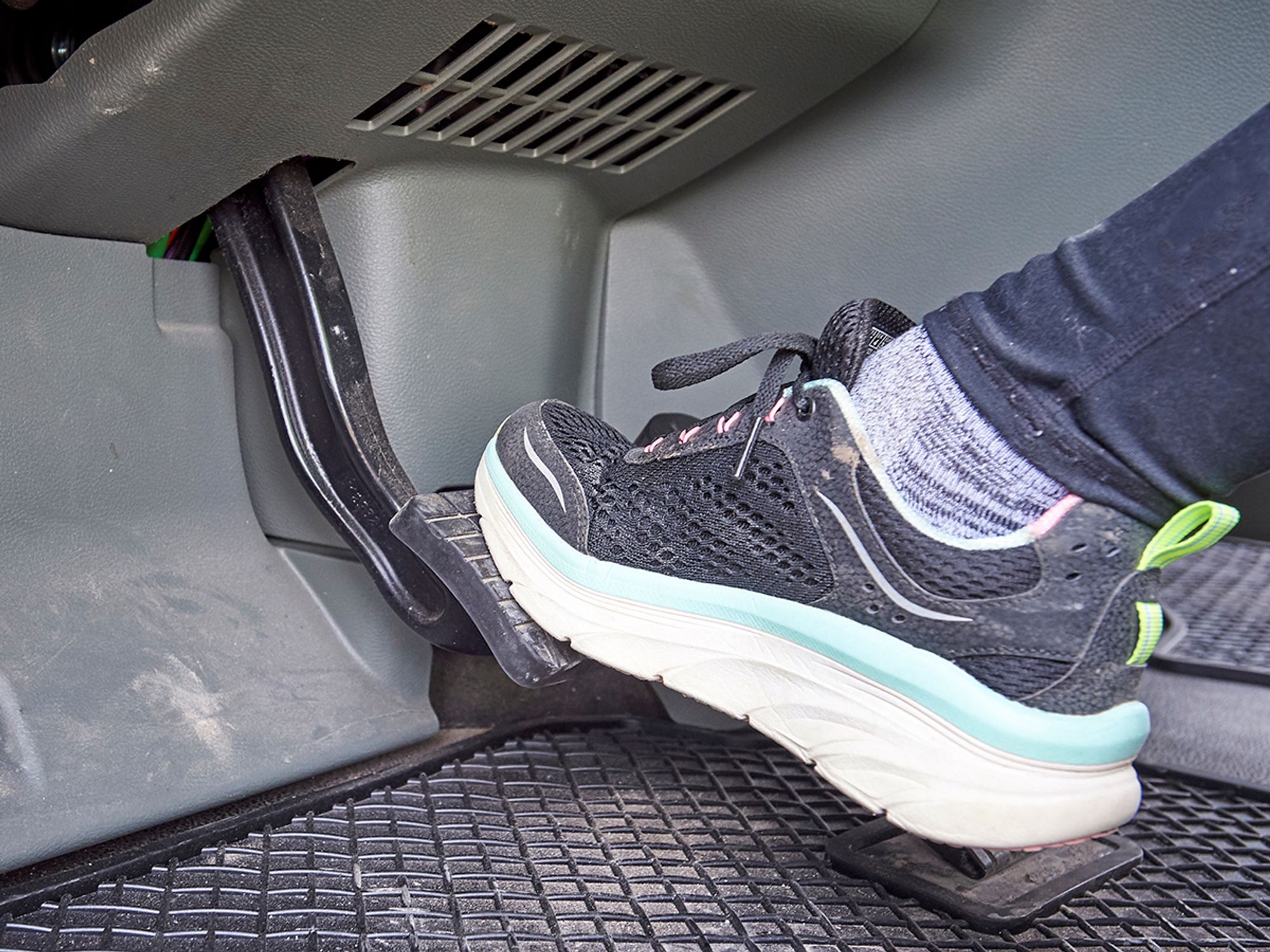Exceptions: Braking rules

- Exceptions to the general rule that all wheels on a CMV must be equipped with brakes are provided for certain older trucks/tractors with three or more axles, motor vehicles being towed in a driveaway-towaway operation, semitrailers or pole trailers, full trailers or four-wheel pole trailers, the steering axle of a three-axle dolly which is steered by a co-driver, loaded house moving dollies, specialized trailers and dollies used to transport industrial furnaces, reactors, and similar motor vehicles.
- Exceptions to the general rule that all wheels equipped with brakes must be operative are provided for certain towed vehicles with disabling damage, vehicles being towed in a driveaway-towaway operation, unladen converter dollies, the steering axle of a three-axle dolly which is steered by a co-driver, raised lift axles, loaded house moving dollies, specialized trailers and dollies used to transport industrial furnaces, reactors, and similar motor vehicles.
- Exceptions to the general rule that all wheels equipped with brakes must be operative are provided for devices designed to reduce the front wheel braking effort and surge brakes.
Overview
There are several exceptions to the rules that (1) all commercial motor vehicles (CMVs) must be equipped with brakes acting on all wheels, and (2) all brakes with which a motor vehicle is equipped must always be capable of operating.
There are also braking exceptions for devices designed to reduce the front wheel braking effort and for surge brakes.
Exception: Brakes acting on all wheels
These exceptions, found in 393.42(b), include:
- Trucks or truck tractors having three or more axles and manufactured before July 25, 1980, are not required to have brakes on the front wheels. These vehicles must meet the brake performance requirements in 393.52
- Motor vehicles being towed in a driveaway-towaway operation (including the last truck of triple saddle-mount combinations) are not required to have operative brakes provided the combination of vehicles comply with the brake performance requirements in 393.52.
- Any semitrailer or pole trailer (laden or unladen) with a gross weight of 3,000 pounds or less is not required to be equipped with brakes if the axle weight of the towed vehicle does not exceed 40 percent of the sum of the axle weights of the towing vehicle.
- Any full trailer or four-wheel pole trailer (laden or unladen) with a gross weight of 3,000 pounds or less is not required to be equipped with brakes if the sum of the axle weights of the towed vehicle does not exceed 40 percent of the sum of the axle weights of the towing vehicle.
- Brakes are not required on the steering axle of a three-axle dolly which is steered by a co-driver.
- Loaded house moving dollies, specialized trailers and dollies used to transport industrial furnaces, reactors, and similar motor vehicles are not required to be equipped with brakes, provided certain speed and braking requirements for the combination of vehicles are met.
Exception: Brakes always operative
The requirement, in 393.48(a), that all brakes with which a motor vehicle is equipped must always be capable of operating does not apply to:
- A towed vehicle with disabling damage.
- A vehicle which is towed in a driveaway-towaway operation and is included in the exemption to the requirement in 393.42(b) for brakes on all wheels.
- Unladen converter dollies with a gross weight of 3,000 pounds or less and manufactured prior to March 1, 1998.
- The steering axle of a three-axle dolly which is steered by a co-driver.
- Loaded house moving dollies, specialized trailers and dollies used to transport industrial furnaces, reactors, and similar motor vehicles provided certain speed and braking requirements for the combination of vehicles are met.
- Raised lift axles. Note: Brakes on lift axles must be capable of being applied whenever the lift axle is lowered and the tires contact the roadway.
Devices to reduce or remove front-wheel braking effort — A CMV may be equipped with a device to reduce the front wheel braking effort (or in the case of a three-axle truck or truck tractor manufactured before March 1, 1975, a device to remove the front-wheel braking effort) if that device meets the applicable requirements for manually operated (393.48(b)(1)) and automatic (393.48(b)(2)) devices.
Surge brakes — Surge brakes, designed to slow or stop a towed vehicle, are excepted from the requirement that all brakes be operative at all times as set forth in 393.48(d).
